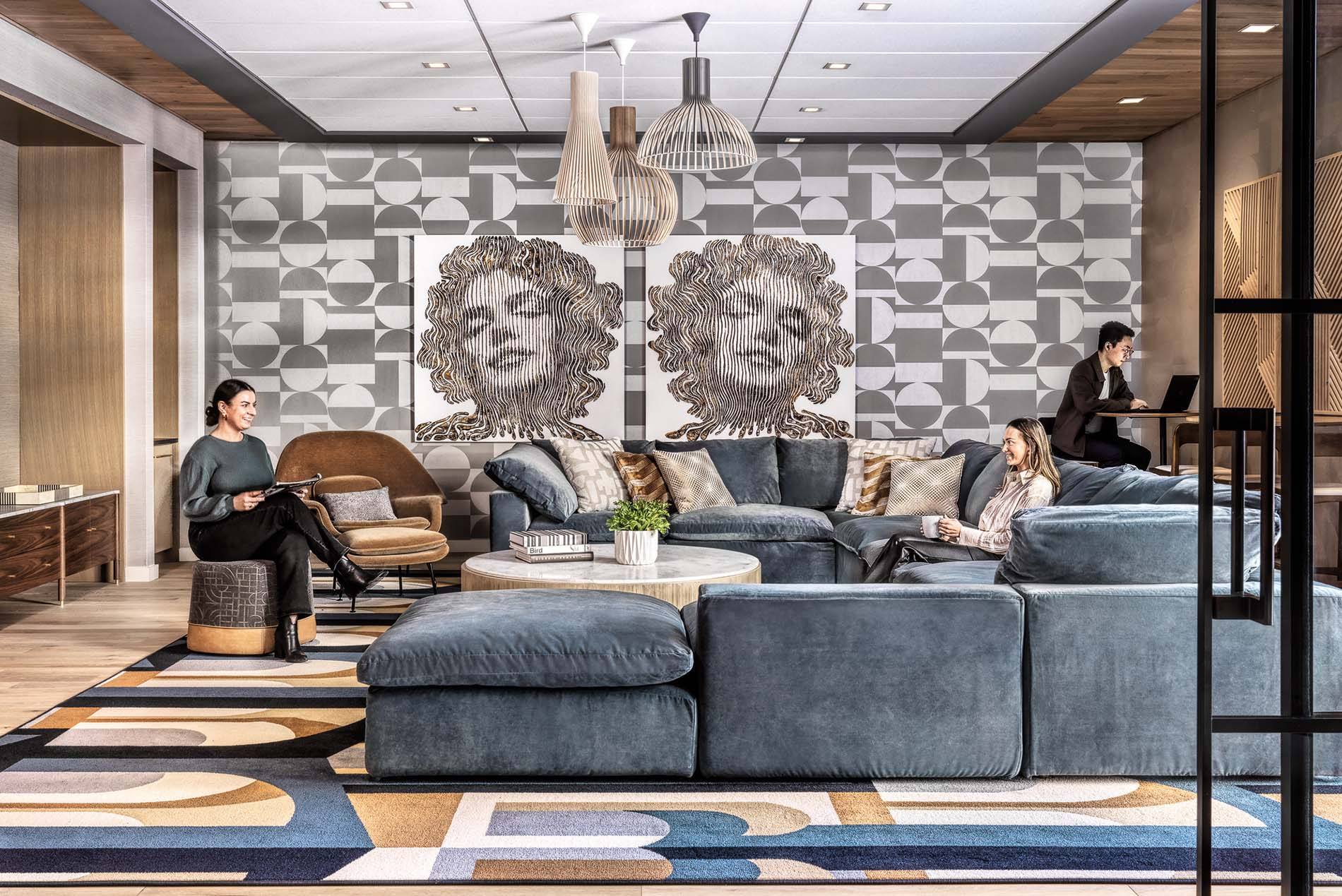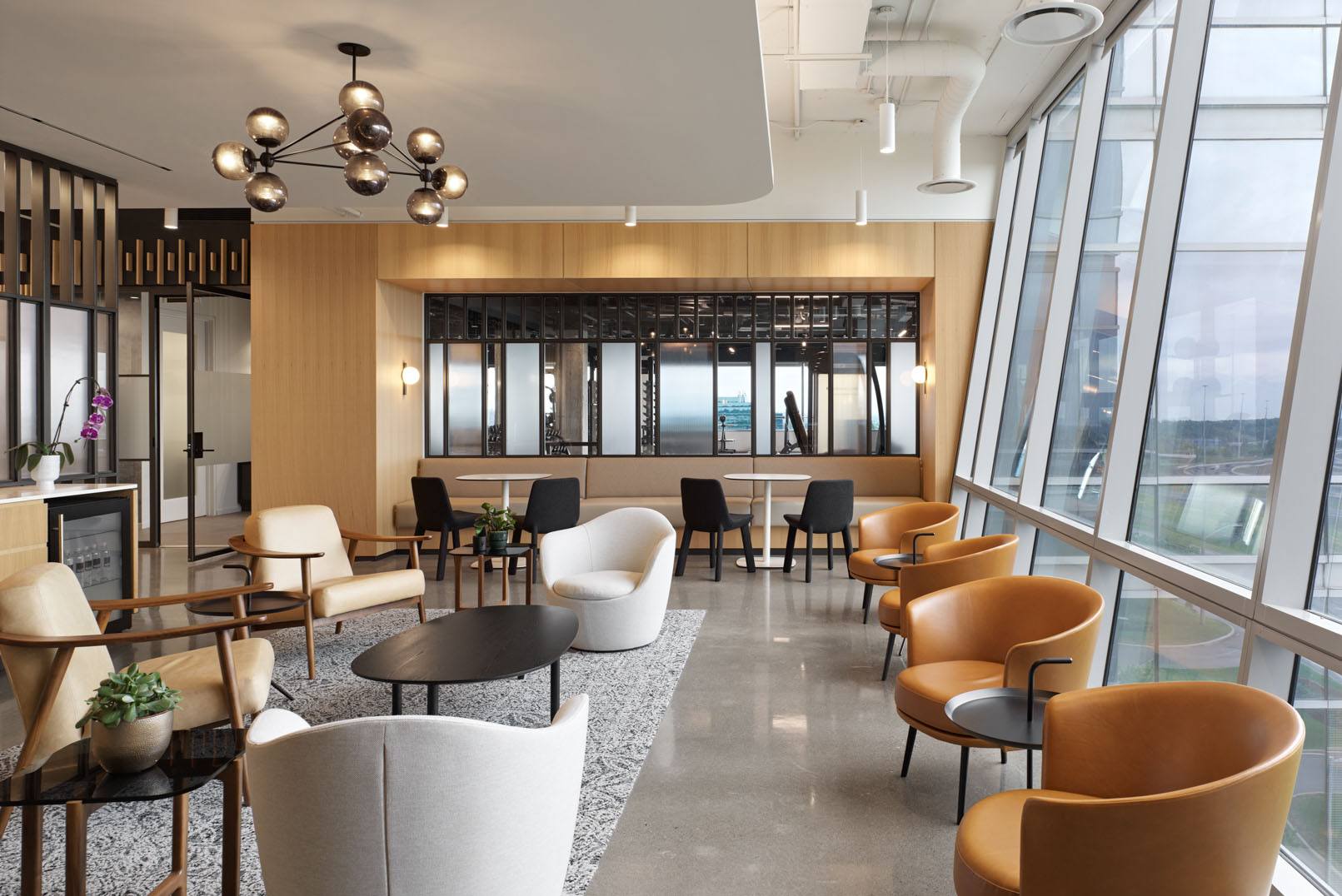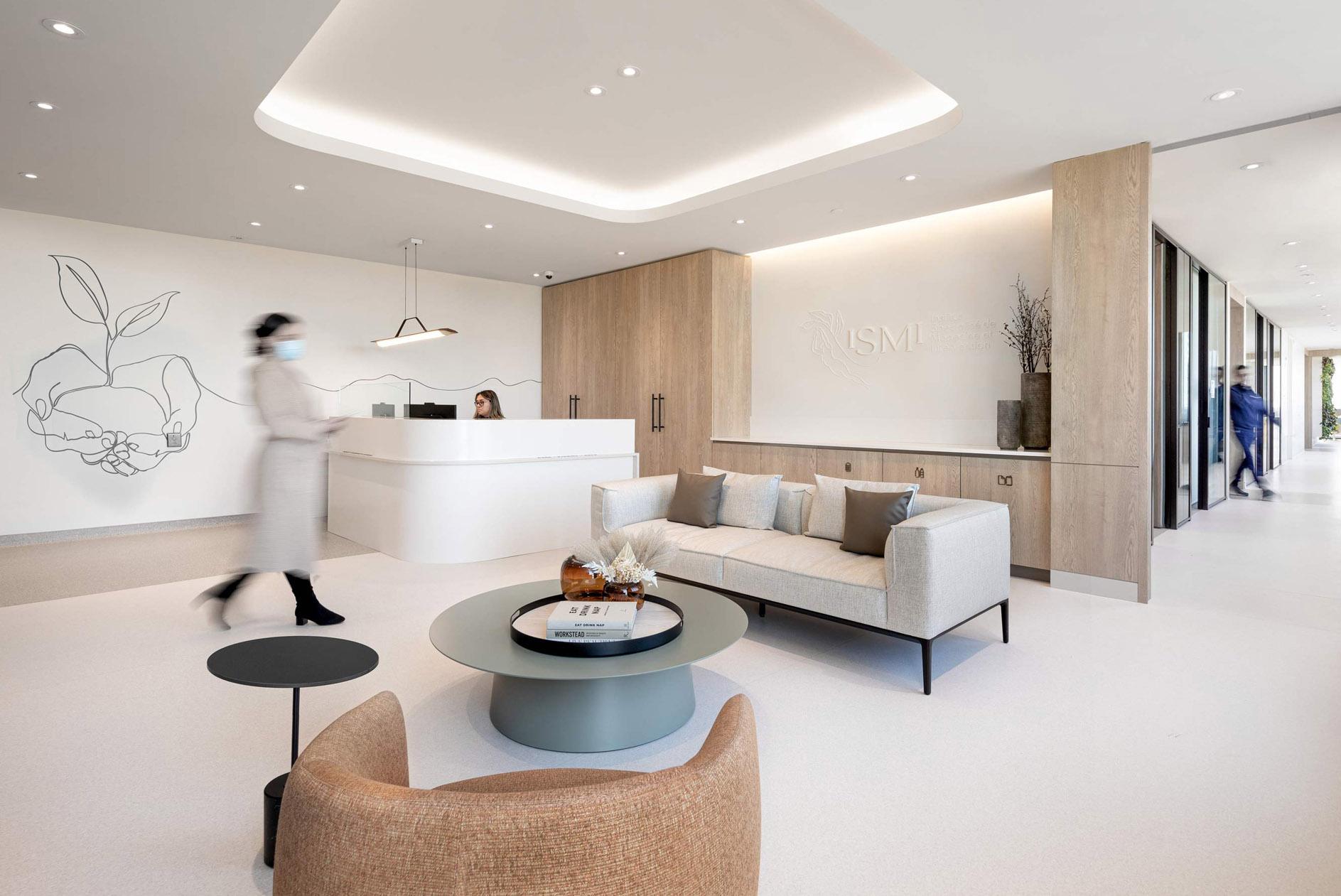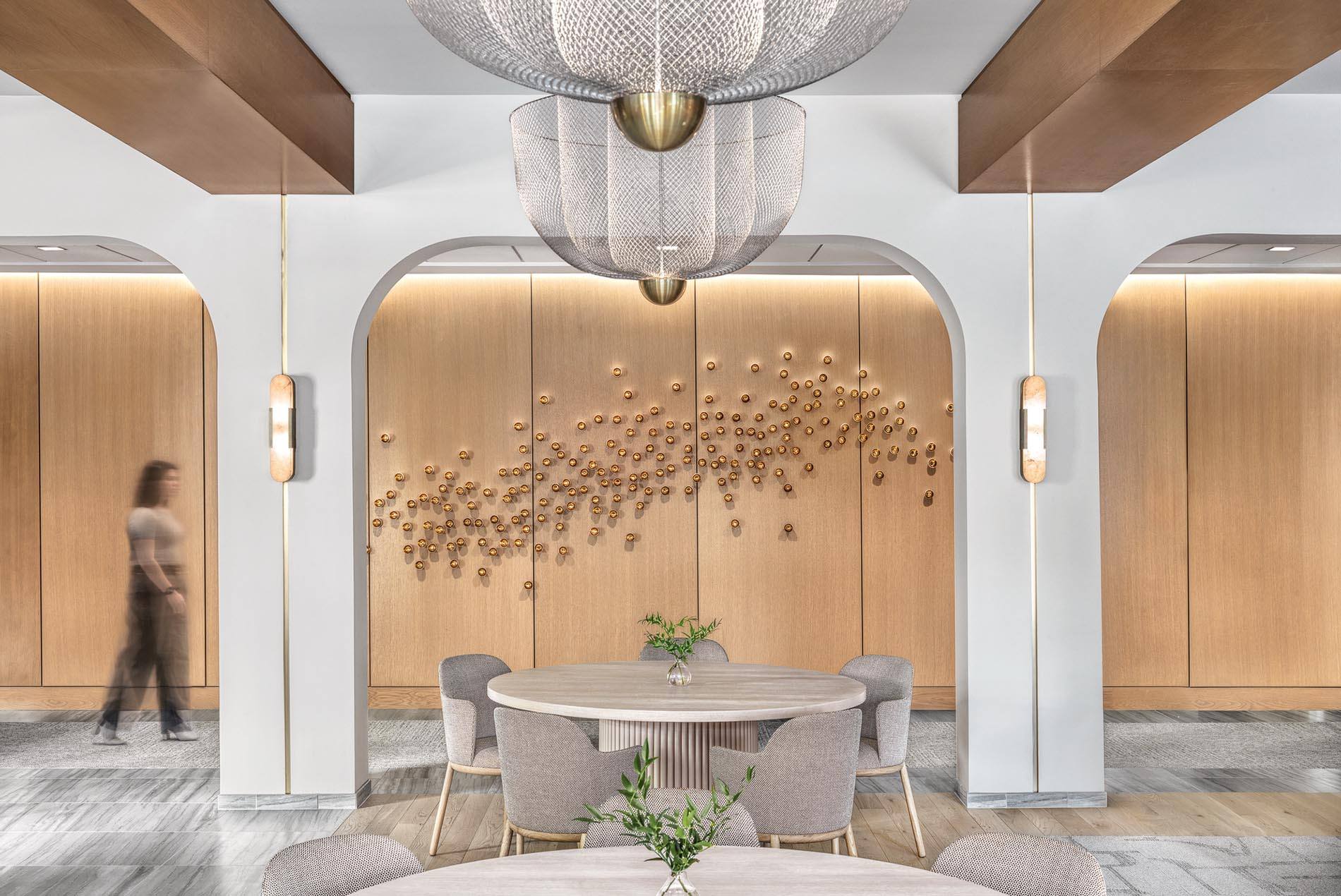HOK’s Lifestyle designers reveal how they transcend traditional boundaries to create exceptional experiences across sectors.
HOK’s Lifestyle studio reimagines spaces to enrich our everyday lives. These designers break down conventional silos, infusing lifestyle elements from various sectors—hospitality, residential, workplace, sports, recreation, entertainment and more—to create human-centered environments. Wellness, sustainability and resilience are always top of mind.
Here, we connect with four of HOK’s Lifestyle designers for a conversation about current trends shaping their projects:
- Laura Jones: Regional Leader of Hospitality, Toronto
- Dina Lamanna: Director of Hospitality Interior Design, New York
- Kelly Lott: Practice Leader, Interiors, St. Louis
- Marianne Weiss: Director of Design, Interiors, Boston

The Clover at Olive Crossing
How does the Lifestyle group’s experiential design philosophy influence your approach across sectors?
Kelly: Lifestyle design expands the core principles of hospitality across markets to enhance lives. It infuses aspects of residential, workplace, healthcare, sports and more to provide memorable experiences that improve how people live.
Marianne: We’re witnessing a cultural shift as people value experiences over spaces. Our team applies this philosophy across all projects by infusing the potential for meaningful experiences everywhere.
Laura: Our roots in hospitality shape our approach. The focus on exceptional guest experiences translates across sectors. We prioritize user journeys, narrative-driven spaces and the power of design to improve how people interact with their environments.
Are there any unexpected sectors embracing lifestyle design?
Dina: Our expertise is ideal for sports and entertainment venues. We understand how to create experiences for all—from luxury suites with a Four Seasons vibe to trendier, Le Meridien-style environments. And we know how to incorporate the whole city experience into a development.
Marianne: Integrating health and wellness has become so important in healthcare design. It’s about creating welcoming experiences for patients. In my recent work, lifestyle approaches also extend to science and tech workplaces, where scientists want stimulating environments beyond the lab.
Laura: Our work with Medcan, a Canadian healthcare provider, is an example (below). Since 2017, they’ve sought to transform patient experiences with hospitality-inspired design. After three successful projects together, they want to expand this nationwide.
Kelly: Building repositioning is another area where lifestyle design attracts tenants and maintains a property’s Class A status. We transform common spaces by incorporating wellness, entertainment and human-scale design elements to create experiences that resonate with users.

Medcan Clinic
How do you blend diverse expertise across sectors to achieve integrated lifestyle design solutions?
Laura: Our process centers on completely mapping the user journey, analyzing key touchpoints, functional needs and desired experiences. This guides our design decisions.
Kelly: We craft unique experiences tailored to the current and future users, brand and desired outcomes. We don’t apply templates, but customize solutions based on understanding the project’s needs and people interacting with the space.
Dina: We design spaces that evolve with the user over time. We want to enhance their lives through meaningful experiences, regardless of the building’s main purpose. That’s what sets lifestyle design apart—it’s the heart of the project.
How do you employ lifestyle design principles in high-stress healthcare environments to support both staff and patient well-being?
Laura: In a recent senior living facility, we focused on a dedicated staff area with distinct elements like a lounge, showers and changing rooms. Our client wanted a space completely different from the rest of the building, where staff can disconnect and recharge. This separation is key in high-stress environments.
Marianne: Healthcare is evolving beyond the traditional hospital. We have more opportunities to prioritize patient well-being and comfort. We tailor environments based on the level of clinical care. Our partners are coming along with us by offering products that marry residential aesthetics with healthcare functionality. Patients aren’t one-dimensional. They all carry the weight of their daily lives. Recognizing this, we can design the “in-between” spaces to give them a better experience.
Dina: Our people-centric approach extends to both clients and staff. Even within budget constraints, we want to create surprising spaces that enhance employee well-being. This directly translates into better patient experiences. Operational spaces may have constraints, but we can transform overlooked areas like corridors and waiting rooms into part of the patient journey. We can shift their emotional state before treatment with natural light, biophilia and wellness principles.
Kelly: Lifestyle design analyzes how everyone interacts with the space—whether guests, staff or delivery people. We want to improve their daily experience. Prioritizing natural light, access to calming outdoor spaces, intuitive flow and elements of biophilia in healthcare settings can significantly improve well-being and reduce stress. This all aligns with our goal of supporting healthier lifestyles.

Institute for Specialized Medicine and Intervention
Do different generations have varying lifestyle design expectations?
Dina: Though generational differences exist, thoughtful design never goes out of style. Regional and cultural influences far outweigh generational differences in lifestyle design preferences. Understanding placemaking and adapting our approach to the unique context of each location is more important than focusing on broad generational trends. What’s suitable for Nashville may not be right for Miami. What works in Miami may not be right for New York.
Kelly: Preferences for lifestyle design might be better understood through the lens of neurodiversity. Some may gravitate toward cozy, private spaces, while others prefer social, vibrant ones. Rather than focusing on generational trends, we design for this diversity of needs.
Dina: Empowering diverse voices within our team helps us design more inclusive spaces. For a soccer stadium we’re designing, our predominantly female-led design team has advocated for more baby-changing stations in men’s restrooms, taking a more universal approach.
We also learn from global best practices. Inspired by the camaraderie-focused hospitality spaces we saw in U.K. stadiums—including a mini hospitality lounge in the home team coach’s office to host the visiting coach after a game—we’re now including similar areas in our U.S. designs to foster a more welcoming atmosphere between teams. The idea about using lifestyle design to bring together opposing sides of a match has been a lovely light bulb moment!
How do you balance attention to detail with creating a positive, immediate human experience in your approach to design?
Dina: As interior designers, we naturally gravitate toward the details a person interacts with on a personal level. We understand the difference between grand architectural gestures and textures and features that resonate at a human scale. This micro-focus enhances the overall experience, blurring interior and exterior design.
Kelly: The key is establishing a clear design concept early and continuously refining it. Ideally, our Lifestyle designers collaborate from the start to enhance a team’s vision.
